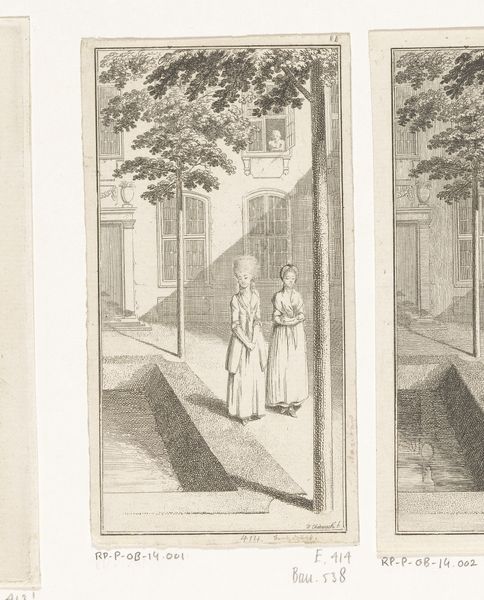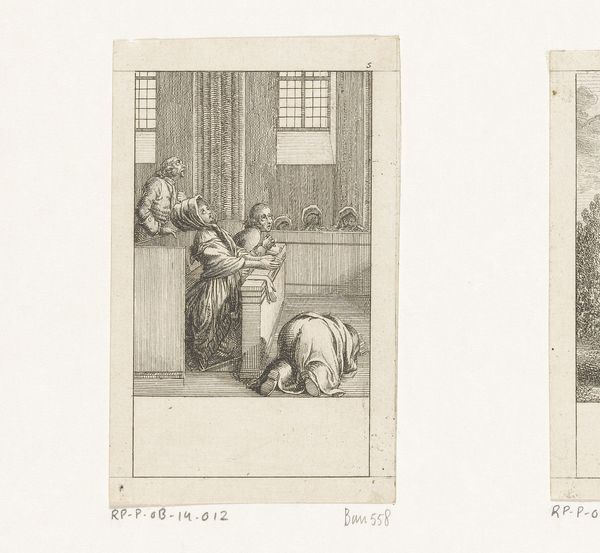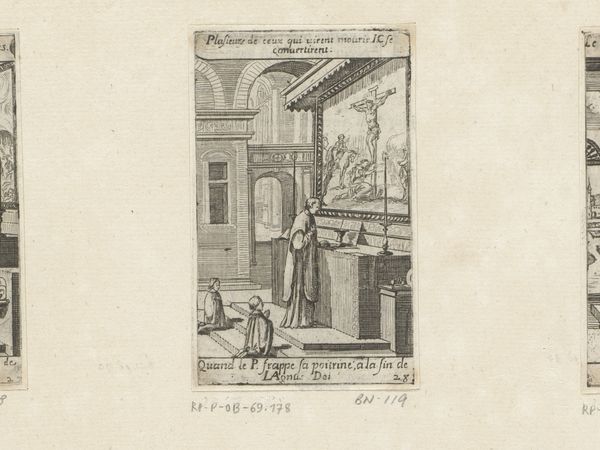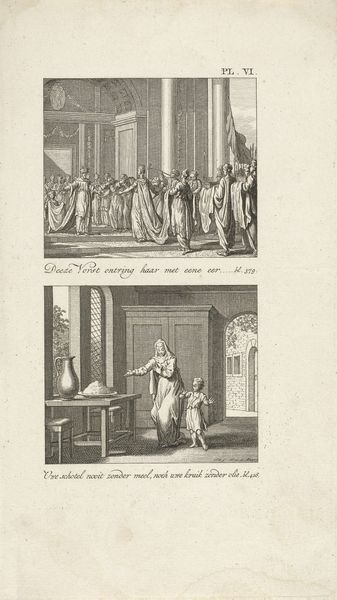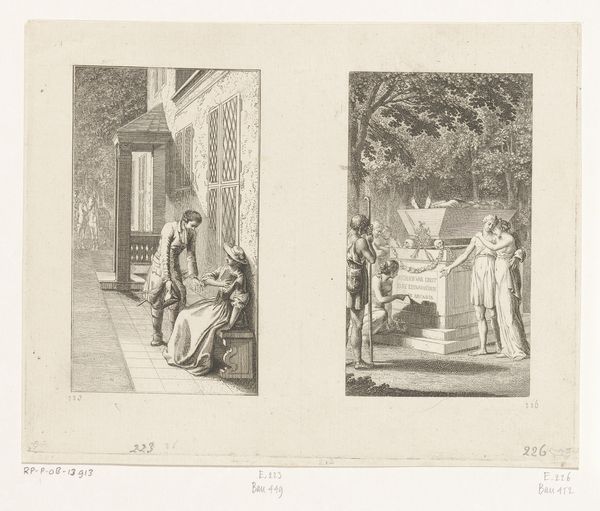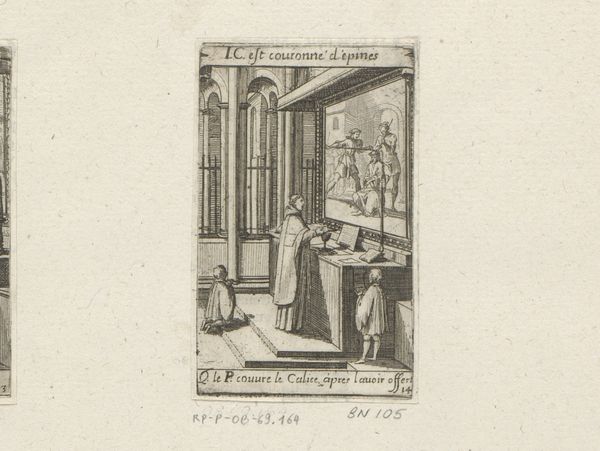
Alexander en Tinchen naast een vijver op een binnenplaats 1781
0:00
0:00
Dimensions: height 140 mm, width 180 mm
Copyright: Rijks Museum: Open Domain
Editor: This print, "Alexander en Tinchen naast een vijver op een binnenplaats," made by Daniel Nikolaus Chodowiecki in 1781, shows a quiet courtyard scene. It's executed with such fine lines, giving it an almost dreamlike quality. What can you tell me about the story it might be trying to tell? Curator: The fineness of line points us to the culture of printmaking at the time, accessible and democratic. The scene depicts a seemingly tender moment. But I wonder, does it idealize a kind of domestic tranquility, especially considering the political tensions brewing at the time? What social class do you think these figures belong to? Editor: Judging from the attire, they appear to be of upper social standing, perhaps merchants or gentry? There’s a formal garden visible behind them, hinting at wealth. Curator: Precisely. And it's worth asking if the image served to reinforce those class distinctions, offering a vision of bourgeois harmony even as other realities existed for those outside of it. How might its original viewers have perceived this idealized world? Editor: It seems that the artist is selling the viewer on an aspirational lifestyle where romance and peace can be part of their future. Do you see a political purpose at play or something else? Curator: It could also be seen as subtly conservative, maybe. This picturesque scene can normalize or downplay social upheaval in favor of a more palatable version of life for those with influence. What do you make of its setting as a print – and not, say, a painting meant for display in a single grand salon? Editor: Thinking about it as a print, accessible to a broader audience, makes me rethink its message. It wasn't just for the elite. It almost feels like propaganda, normalizing and promoting the lifestyle you've just mentioned. Curator: Exactly! Seeing art as embedded in specific social and political contexts provides layers of new interpretations. I've really enjoyed discussing how socio-economic classes were represented in artwork at that time. Editor: Yes, this has really changed my perspective and showed me to ask further-reaching questions than just the technical ability and aesthetic achievement of an artwork. Thanks!
Comments
No comments
Be the first to comment and join the conversation on the ultimate creative platform.
